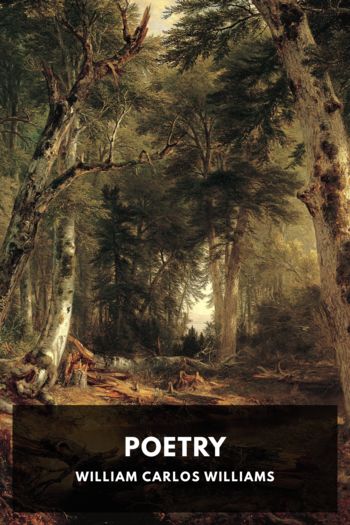Hidden History: Lost Civilizations, Secret Knowledge, and Ancient Mysteries, Brian Haughton [books you need to read .TXT] 📗

- Author: Brian Haughton
Book online «Hidden History: Lost Civilizations, Secret Knowledge, and Ancient Mysteries, Brian Haughton [books you need to read .TXT] 📗». Author Brian Haughton
There are many aspects of the Woolpit tale that are found in English folk beliefs, and some see the Green Children as personifications of nature, related to the Green Man or Jack-inthe-Green of English folklore, or even the Green Knight of Arthurian myth. Perhaps the children are related to the elves and fairies which, until a century or two ago, were believed in by many country folk. If the Green Children story is a fairytale, then it has the unusual twist of the girl never returning to her otherworldly home, but
remaining married and living as a mortal. Perhaps Ralph of Coggeshall's slightly enigmatic comment that the girl was "rather loose and wanton in her conduct" is a suggestion that she had retained some of her fairy wildness. The color green has always been associated with the otherworld and the supernatural. The children's fondness for green beans does suggest another link with the otherworld, as beans were said to be the food of the dead. In Roman religion, the Lemuria was an annual festival in which people used offerings of beans to exorcise the evil ghosts of the dead (the Lemures) from their homes. In ancient Greece, Rome, and Egypt, as well as in medieval England, beans were believed to contain the souls of the dead.
Though the Woolpit story is included in two 12th century sources, it must be born in mind that the chronicles of the time, though describing political and religious events, also listed many signs, wonders, and miracles that would not be accepted today, but were widely believed at the time, even by educated men and women. Perhaps then, the strange apparition of the Green Children was a symbol of disturbed and changing times intermingled with local mythology and folk beliefs of fairies and the afterlife. Whatever the truth of the matter, unless descendents of Agnes Barre can be traced, as some have suggested, or further contemporary documentary evidence unearthed, the story of the Green Children will remain one of England's most puzzling mysteries.
Apollonius of Tyana: Ancient Wonder Worker
Apollonius of Tyana by Jean-Jacques Boissard, probably late 16th century.
Apollonius of Tyana was a first century neo-Pythagorean, a charismatic philosopher, teacher, vegetarian, and miracle worker. He was perhaps the most famous philosopher of the GrecoRoman world and a contemporary of Jesus, with whom he has frequently been compared. Apollonius traveled extensively for his time; he visited
Syria, Egypt, and India, among other places, and was credited with many wonders and much wisdom. During his lifetime and afterward, he achieved almost mythical fame, and his teachings have been an influence on both scientific and spiritual thought for more than 2,000 years.
During his life, Apollonius wrote numerous books and treatises on various subjects, including philosophy, science, and medicine, but unfortunately none of these survived. There are brief mentions of him in ancient works by Christian authors such as St. Jerome and St. Augustine, but the main source for Apollonius is the Life of Apollonius written by the Athenian author Flavius Philostratus (c. A.D. 170-A.D. 245). Composed in Greek in A.D. 216, this work consists of eight books and is the only surviving biography of the great sage. It is apparently based on a journal kept by Apollonius's companion, Damis, and was commissioned by Julia Domna of Syria, second wife of the Emperor Septimius Severus, and Caracalla's mother. One reason that has been suggested for Julia requesting such a work was to counter the influence of Christianity on Roman civilization. Indeed, some have even seen it as an attempt to construct a miracle-working rival to Jesus Christ. The work itself is an odd mixture of historical truth and outright romantic fiction, which is one of the reasons why so little is known about Apollonius. In fact, there are so many miraculous occurrences in the book that many people believed Apollonius of Tyana to be a completely fictitious character. Even today, there are a few people of this opinion.
Apollonius was born around A.D. 2 in Tyana (modern day Bor in southern Turkey), in the Roman province of Cappadocia. He was born into a wealthy and respected Cappadocian Greek family, and received the best education, studying grammar and rhetoric in Tarsus, learning medicine at the temple of Aesculapius at Aegae,
and philosophy at the school of Pythagoras. At the age of 16 he adopted the discipline of the Pythagorean School and pursued its austere lifestyle. He allowed his hair to grow long; abstained from marriage, wine, and animal flesh; wore only linen clothing; never shaved; and slept on the bare earth. Before long, Apollonius became well-known for his habits and also for his severe criticism of the Pagan practice of sacrificing animals to the gods. He later gave most of his family inheritance to his elder brother, and the remaining to his poor relations, retaining only enough to meet his basic needs. He then began a five year period of complete silence. This silence seems to have enhanced the deeply spiritual aura already surrounding him and increased his reputation as a knowledgeable seer. Philostratus describes Apollonius as a superhuman, who possessed knowledge of all languages without studying, could read people's minds, understood the language of birds and animals, and had the ability to predict the future.
Fascinated by the secret doctrines of the religions of the world, and devoted to the purification of the numerous cults throughout the Roman Empire, Apollonius embarked on a quest to discover, understand, reform, and teach his own unique brand of





Comments (0)